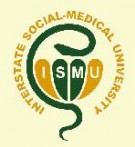CDC: Novel Swine Flu Cases are on the Rise in US
August 9, 2012 — The number of cases of variant swine influenza virus A (H3N2) around the country has soared to at least 145 since July 12 and it`s likely to increase during the coming weeks, the US Centers for Disease Control and Prevention (CDC) announced today in a telephone news conference.At least 12 new cases were reported last week. The tally so far is 113 cases in Indiana, 30 in Ohio, 1 in Hawaii, and in Illinois, according to epidemiologist Robert Bresee, MD. "We are expecting an increasing number of cases in the next week." The vast majority of cases have involved children and included 2 brief hospitalizations. Children, the elderly, and people with compromised immune systems are most at risk he said.
Direct or indirect contact with pigs explains how most of those affected caught the virus. Almost all of the new cases involved patients who had been exposed to pigs at agricultural fairs or farms. Limited human-to-human transmission with this virus has been observed in the past, but "we don`t have any confirmed cases so far," Dr. Bresee said. "We wouldn`t be surprised, though, if we see some cases. So far, all cases are related to close proximity to pigs."
The CDC has recommended that pigs be screened for illness before being allowed to enter a fair, but it is not necessary at this point to cancel any swine shows, he said.
The agency reiterated its advice that people who come in contact with pigs wash their hands with soap and water before and after exposure to swine, never eat or drink in swine areas, and avoid close contact with swine that appear to be sick. "Those steps will go a long way to prevent transmission of the virus," he said.The virus in swine can be spread when people are standing near an infected pig that coughs or sneezes. Transmission can also occur when people first touch an infected pig or surface and then their own mouth or nose, the CDC said. States are now confirming positive cases on their own before reporting them to CDC and will have the most up-to-date information, Dr. Bresee said. The CDC will update the counts every Friday.
The H3N2v virus leaves patients as sick as if they had caught the seasonal influenza virus. "Based on clinical symptoms alone, it`s difficult or impossible to tell them apart," Dr. Bresee said at a conference last week. Accordingly, clinicians need to have a specimen tested by a state health department or the CDC to make the call. AIHD comments: The best antiviral natural remedy is Melaleuca essential oil, which usually clears flu symptoms in a day or two. It is also the best preventive measure – just two drops on a sinuses before bed.








